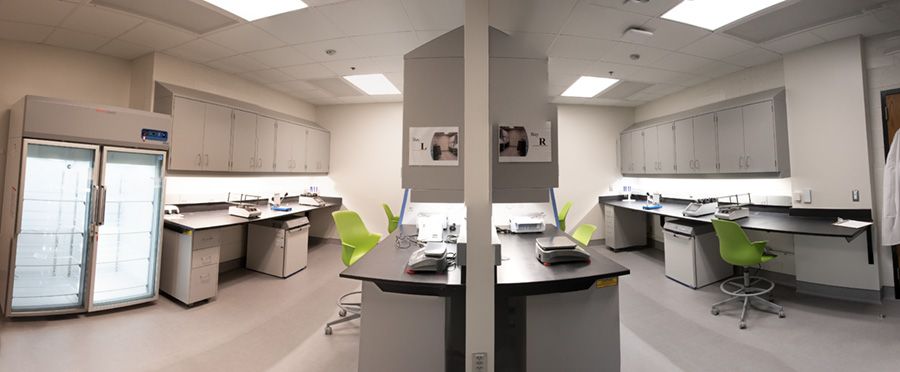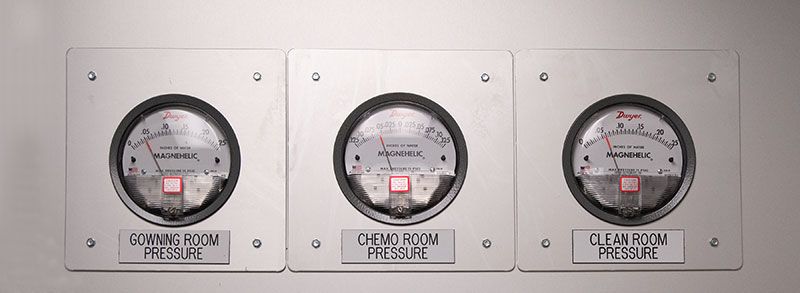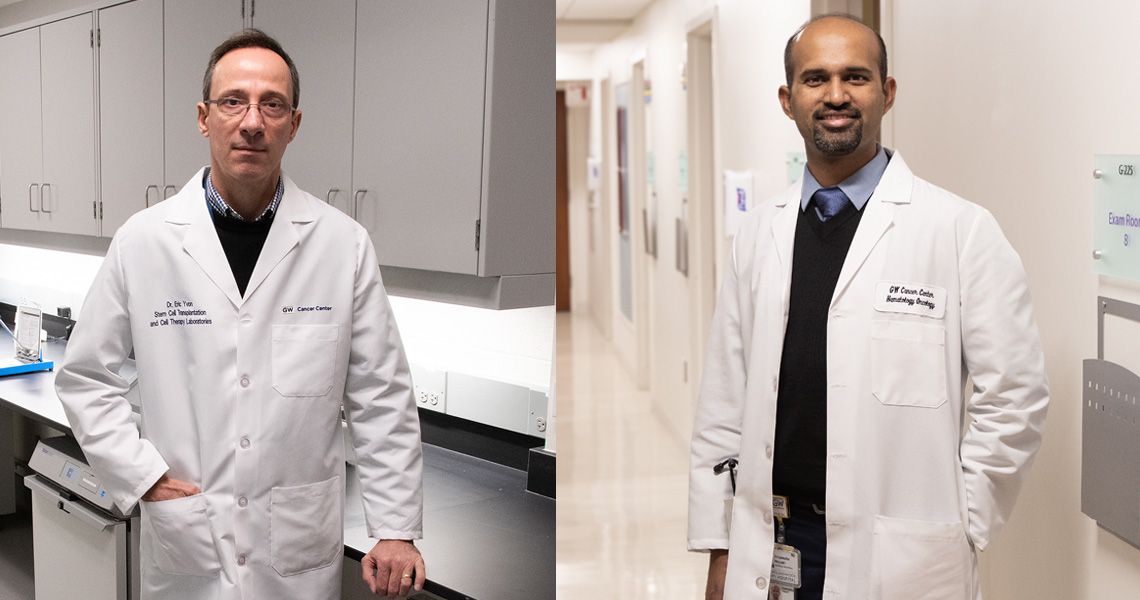After extensive planning and preparation, the George Washington University’s (GW) School of Medicine and Health Sciences (SMHS) recently celebrated the completion of its new, state-of-the-art GMP Cellular Processing and Manufacturing Facility this year, a major asset to the medical and research community.
GMP refers to the Food and Drug Administration’s Good Manufacturing Practice regulations, which require that drugs and medical device manufacturers, processors, and packagers take proactive steps to ensure their products are safe, pure, and effective.
The new lab supports the clinical requirements for the GW Cancer Center’s bone marrow transplant program, enabling the program to expand to meet the needs of the community. Bone marrow transplants — which introduce healthy donor bone marrow cells necessary for creating oxygen-carrying red blood cells, infection-fighting white cells, and wound-healing platelets — require an advanced laboratory to manipulate and freeze the cells. Previously, GW Cancer Center doctors had to outsource their needs to Children’s National Hospital, says Amarendra Neppalli, MD, associate professor at GW SMHS, but now all their needs can be met in Foggy Bottom.
The new lab “gives us the ability to do it here all in one place,” says Neppalli, who also serves as chief of plasma cell disorders and director of transplant and cellular therapy at the GW Medical Faculty Associates. “Having that facility is sort of a linchpin to your ability to build out the multiple myeloma cell therapy programs.”
The lab, he adds, also makes the program more efficient and cost effective. “This is a crucial step in supporting the clinical requirements and research initiatives such as translational or cell therapy projects. This is a milestone which is going to be significant in terms of where we can take this program.”
The route to opening the new facility involved an extensive validation testing process before the lab could begin processing stem cells for human transplantation. The testing enabled the lab team nail down all of the procedures from sample collection to processing, storage, and delivery. “The process is very specific, standardized,” Neppalli explains. “There is a storyboard for every permutation and combination; every step along the way has to be intentional.”

“We believe that with the investment that GW Hospital is making, moving from a four-bed inpatient [bone marrow transplant] unit to an 11-bed, state-of-the-art facility, we’re going to be able to scale up transplants in the next two or three years and really add meaningful capacity to our region,” says Michael Benedict, GW Cancer Center’s associate director for administration and finance. “If you look at the cancer incidence rates in the Washington, D.C., region for the types of cancers that need transplantation and you compare that to the capability and capacity of [the area], you quickly realize there’s not enough capacity to meet the demand.
“Those who get their transplant services within the metro region are waiting longer periods of time, or they’re having to go elsewhere, because there’s not enough capacity for quality transplants in our community,” he continues. “This facility will go a long way toward filling that void.”
In addition to serving GW Cancer Center’s clinical care needs, the facility was designed to do the heavy lifting in support of future clinical and translational cell therapy research, from clinical trials to the development of more novel therapies related to cell therapy.
“Basically, this facility is two separate entities,” explains Eric Yvon, PhD, associate professor of medicine at GW SMHS and director of the facility, located on the ground floor of Ross Hall on GW’s Foggy Bottom campus. “One side will be dedicated to stem cell transplantation for patients being treated at GW Hospital, and the other part of the lab is what we call a GMP facility, or what I would describe as clean rooms where you prepare a product similar to a pharmaceutical company.”
Yvon, who has more than 30 years of experience running cell therapy facilities, helped design the new facility, all the way down to the location of the outlets. Every part of the space was carefully crafted to serve the needs of doctors and patients as well as the community who will benefit from the novel therapies developed there.
“Starting a program from zero is challenging in many ways,” Yvon says. “But if you have the knowledge of how to run a program like that, then you can tailor it to your experience. I can blend everything together and have a unique program. That is very exciting.”

The new facility will also fill a void for industry; while most cancer centers and academic medical centers are able to make products locally for stem cell transplant and support FDA-approved, commercially available cellular products such as CAR-T therapies, few are positioned to provide contract work for industrial partners.
“There’s an enormous biotech cluster in the Washington, D.C., region, and there’s a big need for clean room technology space,” says Benedict. “So, we will wind up either making products for commercial partners or leasing out some of these rooms for those who want access to this type of infrastructure and technical skill.”
“I’ve been approached by a couple of very, very big companies [because] it’s very difficult for them to find GMP space,” adds Yvon. “There is a clear commercial potential.”
The GMP facility also will support researchers working to create novel vector and gene therapies for patients who have cancer as well as activities for non-cancer faculty on campus.
“So that’s really important,” explains Yvon. “The scope of this facility will be bigger than only cancer.”




